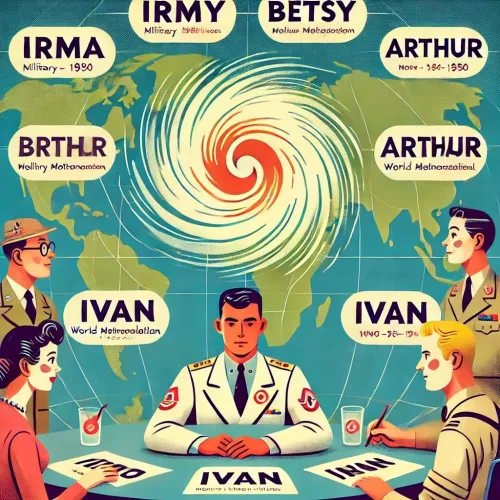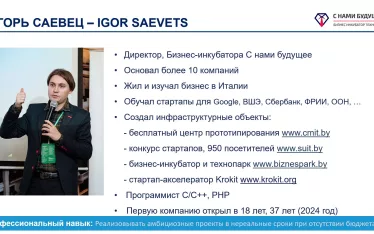
How Hurricane Names Are Chosen: History, Practices, and Social Implications
Naming hurricanes is more than a mere organizational tool for meteorologists; it serves as a critical element in public communication and disaster management. The process of assigning names to these powerful natural phenomena has evolved over decades, influenced by cultural norms, scientific advancements, and societal behaviors. This article delves into the history, methodologies, and the underlying reasons why hurricane names play a pivotal role in both awareness and response efforts.
The Origins of Using Female Names
The practice of naming hurricanes with female names dates back to the early 20th century, particularly gaining traction during World War II. Military meteorologists found it cumbersome to differentiate between multiple storms in communication channels such as radio and telegraph. To streamline this process, they began assigning female names to each hurricane. Leonid Starikov, a leading meteorologist at “Gismeteo,” recounts, “Often, multiple tropical storms would be active in the same region. To avoid confusion and reduce the complexity of descriptions, military meteorologists decided to name them after their wives, mothers-in-law, girlfriends, and female comrades. This was both a gesture of affection and a subtle nod to the perceived volatile nature of women.”
This method proved highly effective and quickly became a standardized practice. In 1953, the National Hurricane Center (NHC) in the United States officially adopted the use of female names for hurricanes. This approach not only simplified communication but also humanized the storms, making them more relatable to the public.
Discovering the Pattern: Regional Name Popularity Boosts Donations
As meteorologists continued to use female names, an interesting pattern emerged: hurricanes bearing names that were more common in the affected regions tended to garner more public sympathy and support. Studies indicated that when a hurricane was named after a locally popular female name, residents were more likely to donate funds and contribute to recovery efforts. This phenomenon can be attributed to the emotional connection people felt towards names that resonated within their community.
For instance, a hurricane named “Maria” in a Spanish-speaking region or “Anne” in an English-speaking area saw higher donation rates compared to less familiar names. The familiarity of the name made the disaster feel closer to home, fostering a stronger sense of urgency and compassion. Consequently, meteorological organizations began to consider regional name popularity when compiling their lists, recognizing that this strategy could enhance community support and expedite recovery processes.
The Introduction of Male Names
Until 1979, only female names were used for hurricanes, a practice that faced criticism for its gender bias. Feminist movements argued that exclusively female names reinforced stereotypes associating women with fragility and destructiveness. Responding to these concerns, the World Meteorological Organization (WMO) expanded the naming lists to include male names, ensuring gender parity.
This change not only addressed the criticisms but also enriched the naming pools with a broader variety of names. The updated lists incorporated English, Spanish, and French names, reflecting the diverse regions affected by hurricanes. The primary criterion remained the widespread recognition of the names within their respective regions. However, names starting with the letters Q, U, X, Y, and Z were excluded due to their rarity and pronunciation challenges.
The Naming Process: Alphabetical Order and Rotating Lists
Hurricane names are assigned in alphabetical order, with each region maintaining its own predetermined list. Typically, there are six lists, each containing 21 names. These lists rotate every six years, ensuring a diverse and culturally relevant set of names for each hurricane season. If a season produces more than 21 hurricanes, the WMO resorts to the Greek alphabet, as was the case in the hyperactive 2005 hurricane season.
The criteria for naming a storm are clear: a tropical storm is given a name once its wind speeds exceed 62.4 kilometers per hour (km/h), and it is classified as a hurricane when wind speeds reach 118.4 km/h. For example, Hurricane Irma, one of the most intense storms, achieved wind speeds exceeding 280 km/h, placing it firmly in the fifth category.
Retiring Destructive Names
When a hurricane becomes particularly devastating, causing significant loss of life and property, its name is retired from future use. This practice serves two main purposes: it honors the memory of those affected and prevents the name from becoming associated with future storms. Names like “Katrina,” “Sandy,” and “Matthew” have been retired due to the extensive destruction they caused. According to reports from Mirror, Hurricane Irma is also likely to be retired given its severe impact.
Retiring names ensures that each devastating storm is uniquely remembered and that communities do not repeatedly associate the same name with disaster. This practice also helps maintain the sensitivity of affected populations by avoiding the reuse of names linked to traumatic events.
International Variations in Naming Systems
While the English-speaking world predominantly uses human names for hurricanes, other regions have different naming conventions. In Japan and parts of Southeast Asia, particularly where typhoons are common, names are derived from a variety of sources such as animals, flowers, trees, and even products. “Typhoon Morakot,” for instance, translates to “sugarcane” in Thai and caused significant casualties across Taiwan, the Philippines, and China in 2009.
The Japan Meteorological Agency (JMA) oversees the naming of typhoons in the Northwest Pacific, collaborating with neighboring countries to ensure a culturally appropriate and systematic approach. This diversity in naming conventions highlights the adaptability of meteorological practices to fit regional cultural contexts.
Recent Trends: Personalized Cyclone Naming in Europe
In recent years, the practice of naming cyclones has extended beyond tropical systems. European countries have adopted similar systems, with Germany’s Deutscher Wetterdienst (DWD) naming cyclones like “Ivan” and “Olga.” Interestingly, the DWD has introduced a service allowing individuals to purchase personalized cyclone names. For a fee ranging from 100 to 300 euros, people can have the next cyclone named in their honor or after a loved one, blending personal sentiment with meteorological practices.
This commercialization of cyclone naming reflects the growing intersection between meteorology and public engagement, allowing communities to feel a more personal connection to these natural events.
The Unique Japanese Naming System
Japan’s approach to naming typhoons diverges significantly from the human-centric names used elsewhere. Instead, the names often represent natural elements or objects, such as “Moraikot,” meaning “sugarcane.” This method emphasizes the cultural and environmental aspects of the region, fostering a different type of relationship between the population and the natural phenomena.
Aleksey Kislov, head of the Department of Meteorology and Climatology at Moscow State University, explains, “In Japan, it is not customary to name destructive natural phenomena after people. Instead, typhoons receive names that reflect local culture and nature, such as animals, plants, or minerals. This system aligns with the cultural significance placed on nature in Japanese society.”
Historical Naming Practices
Before the establishment of formal naming conventions, hurricanes and typhoons were often named haphazardly. Names could be derived from saints, based on the day of their occurrence, or even assigned sequentially using numbers. For example, the 1825 Hurricane Santa Anna was named after Saint Anne, aligning with the date of its impact on Puerto Rico.
In some instances, meteorologists like Clement Ragg in Australia reportedly named storms after parliamentarians who opposed funding for meteorological research. However, modern meteorologists largely dismiss such anecdotes as myths, emphasizing the systematic and scientific basis of current naming practices.
### Modern Practices and the Future of Hurricane Naming
The system of naming hurricanes continues to evolve, adapting to changing societal needs and scientific advancements. In recent years, the scope has expanded to include non-tropical cyclones, reflecting a more comprehensive understanding of meteorological phenomena. International cooperation and standardization by the WMO ensure that naming practices remain consistent and effective across different regions.
Moreover, the recognition of cultural and social factors in the naming process underscores the importance of names in shaping public perception and response. As meteorological science advances, the integration of technology and data analysis further enhances the precision and relevance of hurricane names.
The Psychological and Social Impact of Naming Hurricanes
Assigning human names to hurricanes has profound psychological and social implications. Names are easier to remember than numerical designations, which enhances public awareness and preparedness. A memorable name can prompt quicker responses, such as evacuation or securing property, potentially saving lives and reducing economic losses.
Additionally, human names personalize the storms, making the threat more tangible and immediate. This personalization can heighten media coverage, ensuring that information about the hurricane reaches a wider audience swiftly. The emotional resonance of familiar names can also foster a stronger sense of community solidarity and support during and after the disaster.
The tradition of naming hurricanes is a multifaceted practice that intertwines scientific methodology with cultural and social dynamics. From the early days of using female names to the modern, inclusive lists that reflect global diversity, the evolution of hurricane naming highlights the balance between practicality and cultural sensitivity. The discovery that regionally popular names can enhance community support underscores the intricate relationship between names and human behavior in disaster response.
As meteorological practices continue to adapt to new challenges and cultural shifts, the naming of hurricanes remains a vital tool in managing and mitigating the impacts of these formidable natural events. By fostering better communication, enhancing public awareness, and strengthening community resilience, the thoughtful assignment of hurricane names plays an indispensable role in safeguarding lives and properties against the fury of nature.


